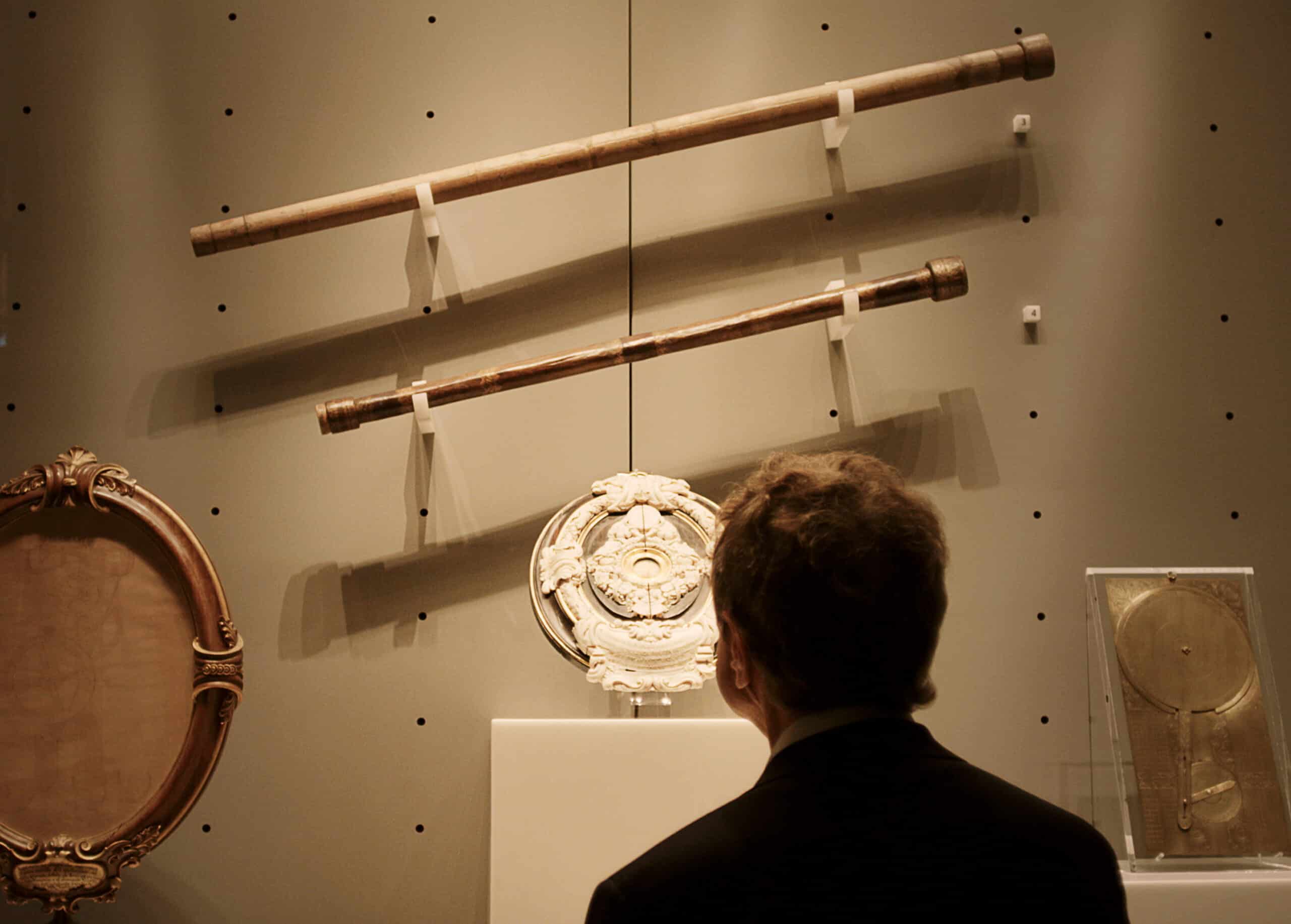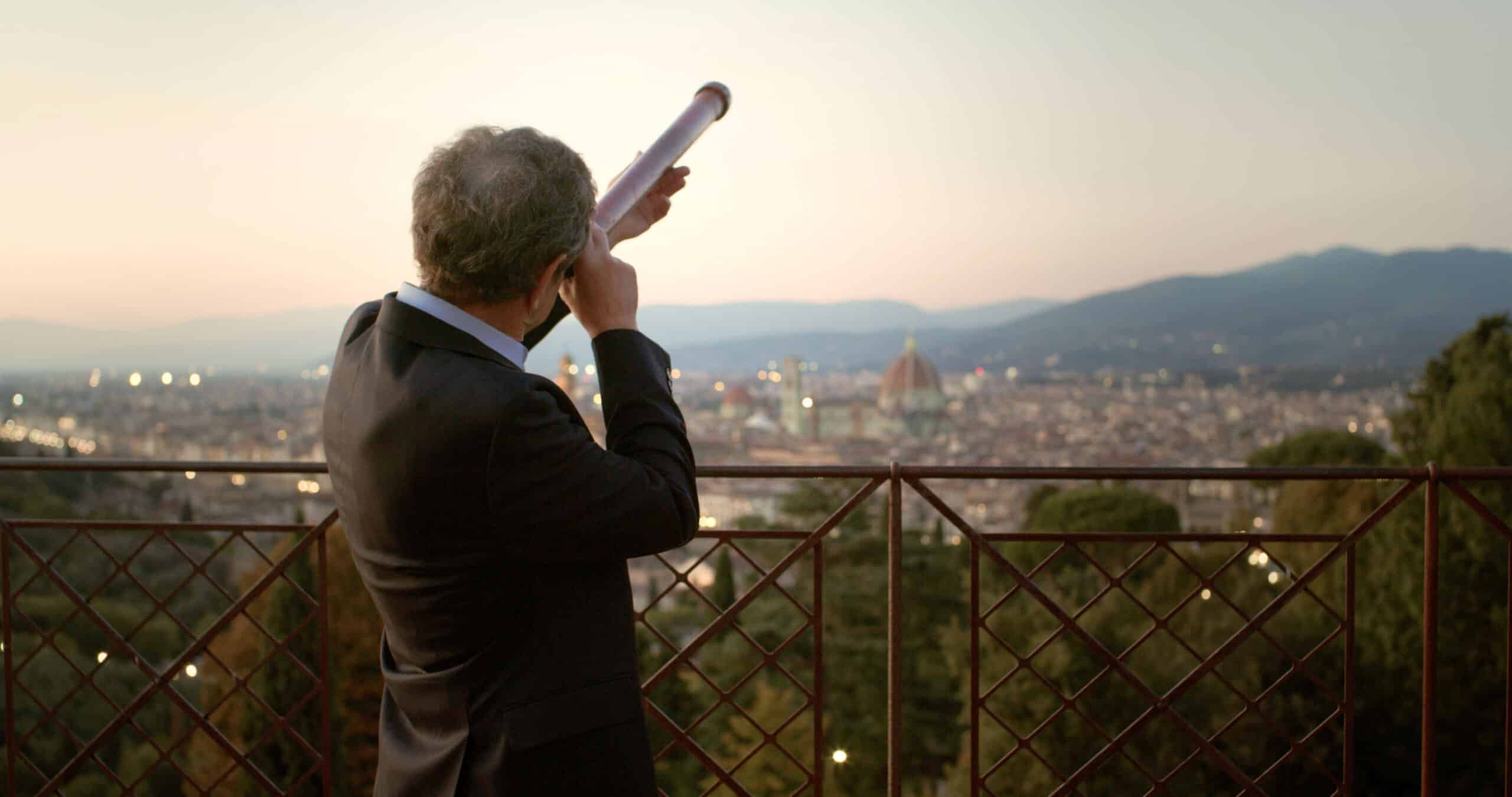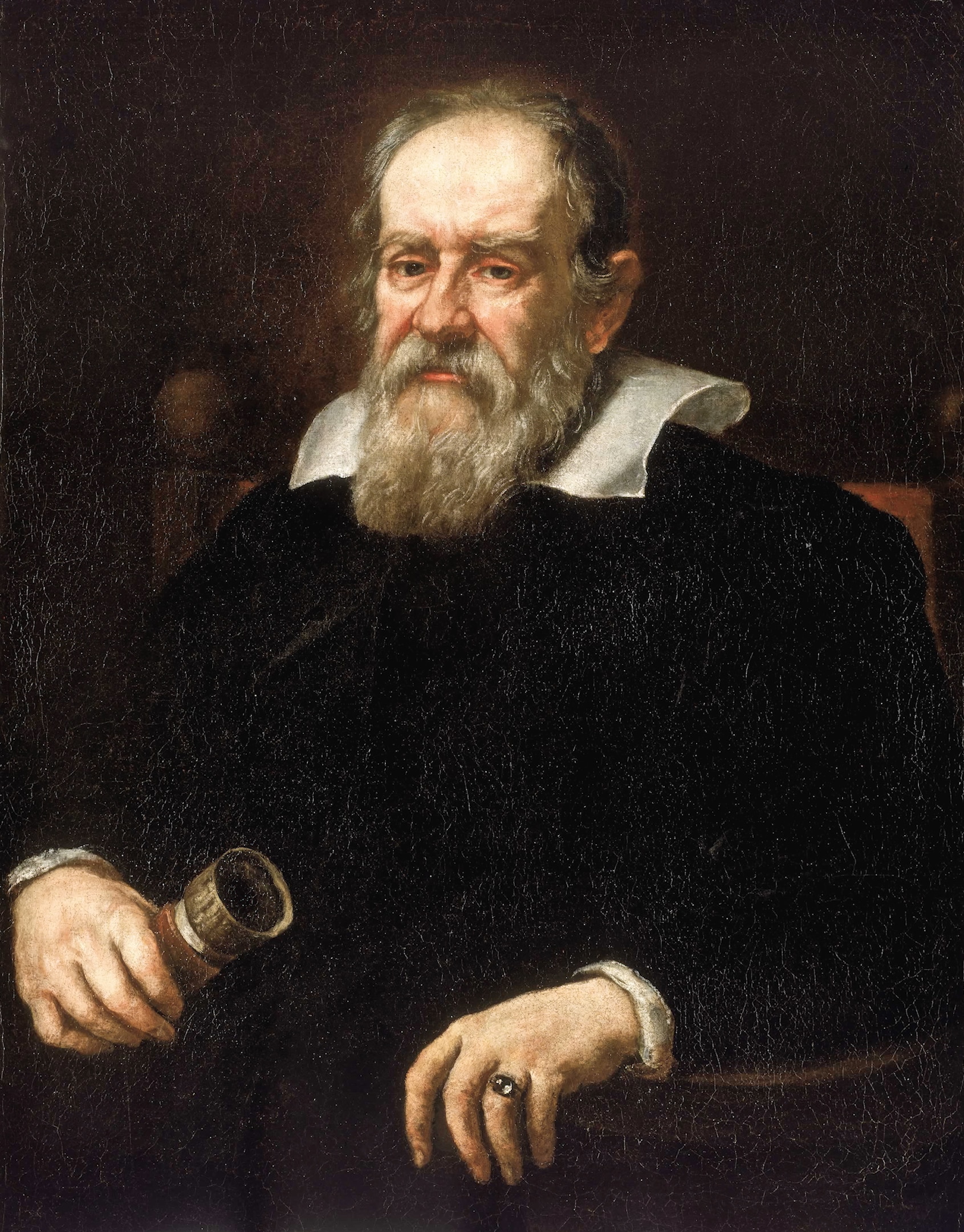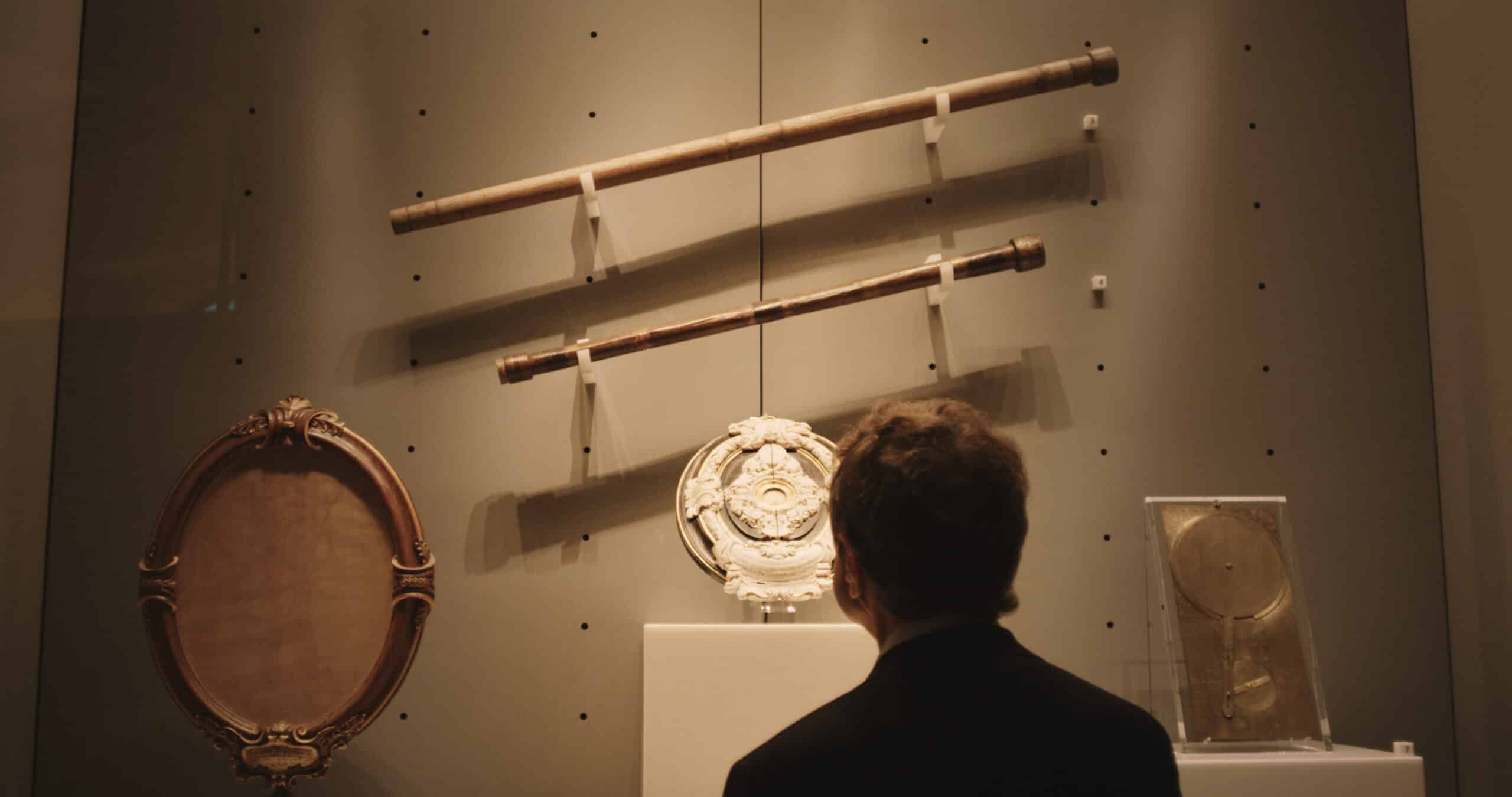
Museo Galileo
Florence, Italy
The Museo Galileo in Florence, Italy, is housed today in the 11th Century Palazzo Castellani, close to the River Arno. Its “Sala VII” (Room 7) preserves the only two surviving telescopes made by Galileo himself. The Museum also hosts other early astronomical instruments, including the immense gilded-wood armillary sphere, which Alan uses to introduce the Aristotelian view of the heavens as perfect ethereal bodies riding on fixed spheres with Earth at the center, a belief Galileo helped overturn. In SEARCHING part 1, in the Old Library, Alan looks through an exact replica Galilean telescope used for educational outreach, and is amazed by how small and blurry the image is.
Museo Galileo
The institution now known as the Museo Galileo has a long and illustrious history. The Medici family were significant figures in Florence’s politics, art and science for many decades, and as noted below, Galileo dedicated his “Starry Messenger” to Cosimo II. In fact, the Medicean collection of scientific instruments was begun by Cosimo’s grand-uncle (CHECK! Yes) Cosimo I (1519-1574), who housed it in the Wardrobe of Palazzo Vecchio, known today as the sala delle carte geografiche (“Map Room”). According to the original project, two large globes, one terrestrial and the other celestial, were to hang from the ceiling. In 1600 Ferdinando I (1549-1609) transferred the collection to a small room in the Uffizi Gallery, which became known as the stanzino delle matematiche, the “Mathematics Room.” On the adjoining terrace was once housed the tremendous armillary sphere built by Antonio Santucci in 1593, beside which Alan Lightman was filmed in SEARCHING part 1.
SEARCHING visited Florence primarily to tell the story of Galileo’s first telescopic observations of the Moon, Sun, and stars. You can explore that room (“Sala 7”) here: Room 7 (which contains the only two surviving telescopes made by Galileo himself)
The Museum’s “Meet Galileo” site provides an excellent illustrated guide to both Galileo’s LIFE and his WORKS.
As seen in the lively and informative conversation between Alan and the former longtime Director of the Museo, Dr. Paolo Galluzzi, in SEARCHING part 1, Galileo rushed his observations into print in fear of being scooped by other early users of the telescope.
Sidereus Nuncius (“The Starry Messenger,” 1610)
The museum writes, “Using the telescope for the first time as a scientific instrument rather than a curious toy, Galileo explored the sky. Before his eyes appeared not only the wonders of nature, but also the physical proof that many of the current astronomical theories, derived from Aristotle, were—in reality—false. In the Sidereus Nuncius (“the messenger arriving from the sky to announce the discoveries”), Galileo published the results of his observations of the Moon, the Milky Way, and most notably, the never before seen four satellites of Jupiter. These discoveries invalidated some of the so-called proofs of the Earth’s immobility proclaimed by the advocates of the Aristotelian-Ptolemaic system, thus further strengthening Galileo’s belief in the Copernican system. In the wake of these sensational discoveries, the Grand Duke of Tuscany summoned Galileo to Florence as First Mathematician and Philosopher to the Court.”
In the 17th Century, the collection of astronomical and other scientific instruments was transferred to the Pitti Palace and later to several other locations in Florence. After the Unification of Italy in the 19th Century, the collections were dispersed among several university departments. But the state of abandonment of the collection was condemned in 1922 by the promoters of the “Group for the Preservation of National Scientific Heritage.” In 1927, thanks to their commitment, the Istituto di Storia delle Scienze (“Institute for the History of Science”) was founded with the goal of “collecting, cataloging and restoring” the scientific collections. In 1929, the newborn Istituto organized the First National Exhibition of the History of Science in Florence. Numerous Italian institutions participated in the show, enhancing the vast dimension of Italy’s scientific heritage, its nationwide diffusion, and its poor state of preservation.
After the damage caused by the bombings that destroyed the bridges of the Lungarno at the end of the Second World War (1944-45), another hard blow was dealt to the collection by the flood of 1966. (That year’s flood of the river Arno killed 101 people and damaged or destroyed millions of masterpieces of art and rare books. It is considered the worst flood in the city’s history since 1557. At its highest, the water reached over 6.7 meters [22 ft] in the Santa Croce area, quite near today’s Museo.) The instruments that at the time were stored in the basement and ground floor of the Museo were seriously damaged. Thanks to international solidarity and the efforts of Maria Luisa Righini Bonelli, then-director of the Museum, it was possible to recover the instruments quickly, reopen the exhibition rooms to the public and return their energies towards library collecting and research activities.
“In recent decades, the Istituto e Museo di Storia della Scienza (the “Institute and Museum for the History of Science”) has experienced a substantial expansion with the growth of visibility of the museum activities and the organization of temporary exhibitions, as well as with the impressive increase in library collections, the assiduous commitment to promoting research, the dense publication of journals and volumes and the massive investment in information and communication technology at the service of historical-scientific research.
The name Museo Galileo was adopted in 2010 after a radical renovation of the museum’s premises and contents. The subtitle Istituto e Museo di Storia della scienza links to its earlier history and shows that the institution keeps considering the activities of documentation and research a top priority.”
SEARCHING sincerely thanks current Museum Director Roberto Ferrari and his staff for their cordial assistance during our filming in Florence. And, no, Alan did not get to borrow one of Galileo’s original telescopes for our program: he walks up to San Miniato with a faithful replica used for education and outreach.
SOURCES: Museo Galileo, Meet Galileo, Sidereus Nuncius, Virtual Tour, Room 7



Galileo
Galileo was born in Pisa and grew up in Florence. After 1592, he taught mathematics at the University of Padua. Unable to discharge his financial responsibilities on his academic salary alone – he had to pay the dowries of his sisters in addition to supporting his three children by a mistress – he took in boarders and sold scientific instruments. In the late 1580s, he performed his famous experiments with motion and falling bodies. In 1609, at the age of forty-five, he heard about a new magnifying device just invented in the Netherlands. Without ever seeing that marvel, he quickly designed and built a telescope himself, several times more powerful than the Dutch model. He seems to have been one of the very first human beings to point such a thing at the night sky. (The telescopes in Holland were called “spyglasses,” leading one to speculate on their uses.)
Grinding and polishing his own lenses, Galileo’s first instruments magnified objects a dozen or so times. He was eventually able to build telescopes that made objects appear 30 times closer than they actually were, and magnified a thousand times. You can see Galileo’s surviving telescopes in the Museo Galileo, in Florence, as seen in Part 1 of SEARCHING. His first telescope was 36.5 inches long and 1.5 inches wide, a tube made of wood and leather with a convex lens at one end and a concave eyepiece on the other. The field of view of this early telescope is extremely small, appearing as a dime-sized circle of light at arm’s length at the end of a long tube. And dim. (See this animation showing the field of view.)
It’s hard to imagine the thrill and surprise Galileo must have felt when he first looked up with his new instrument and gazed upon the “heavenly bodies” – described for centuries as the revolving spheres of the Moon, Sun, and planets. Beyond were the revolving crystalline spheres holding the stars, and finally the outermost sphere, the Primum Mobile, spun by the finger of God. All of it supposedly constructed out of aether, Aristotle’s fifth element, unblemished and perfect in substance and form. And all of it at one with the divine sensorium of God. What Galileo actually saw through his little tube were craters on the moon and dark acne on the sun.
In his little book The Starry Messenger (Sidereus Nuncius in its original Latin), hastily written and published in 1610, Galileo reports what he saw after turning his new telescope towards the heavens. He exhibits his own pen and ink drawings of the Moon seen through his telescope, showing dark and light areas, valleys and hills, craters, ridges, mountains. He even estimates the height of the lunar mountains by the length of their shadows. Later, he observed spots on the Sun. All of this was strong evidence that the heavenly bodies are made of ordinary material, like farm fields and oceans on Earth. The result caused a revolution in thinking about the separation between Heaven and Earth, a mind-bending expansion of the territory of the material world. The materiality of the stars, combined with the law of the conservation of energy, decrees that the stars are doomed to extinction. The stars in the sky, the most striking icons of immortality and permanence, will one day expire and die. Everything in the cosmos passes away.
















